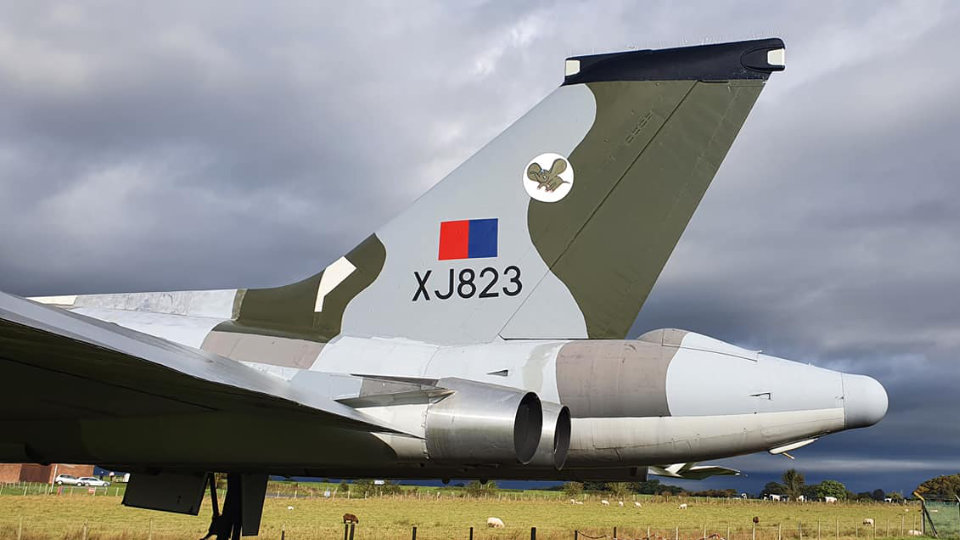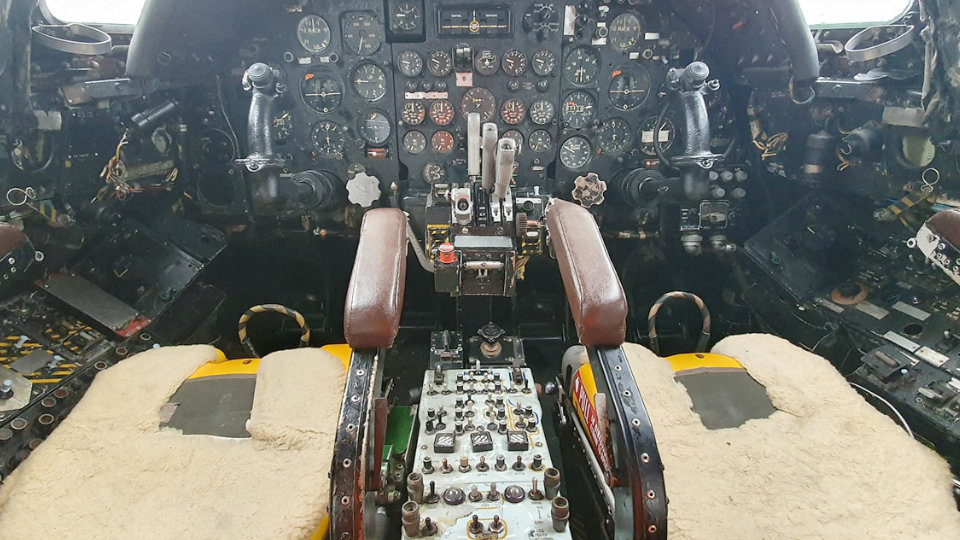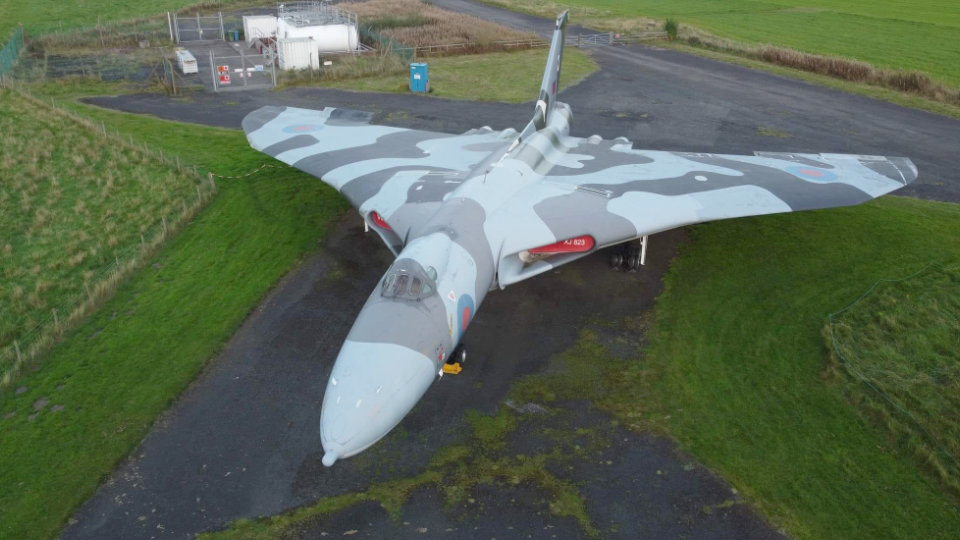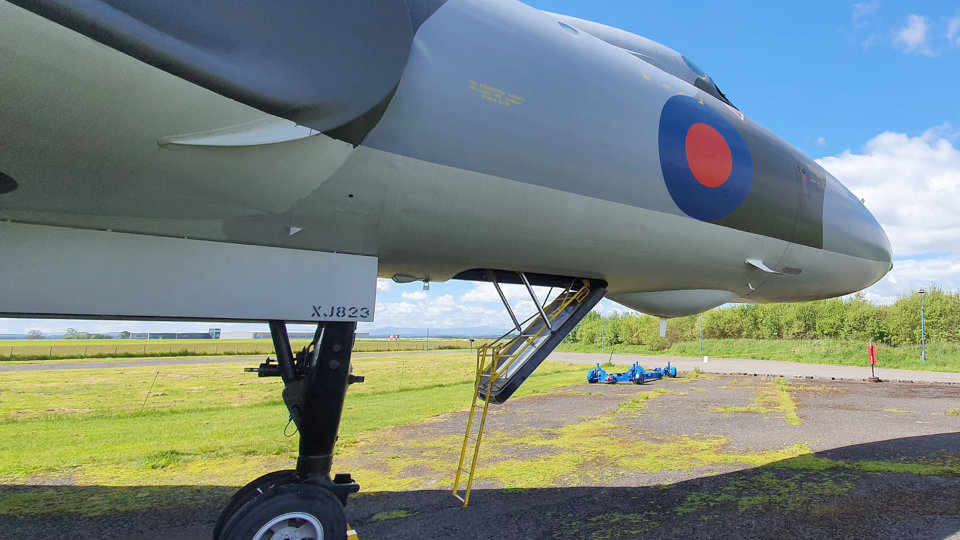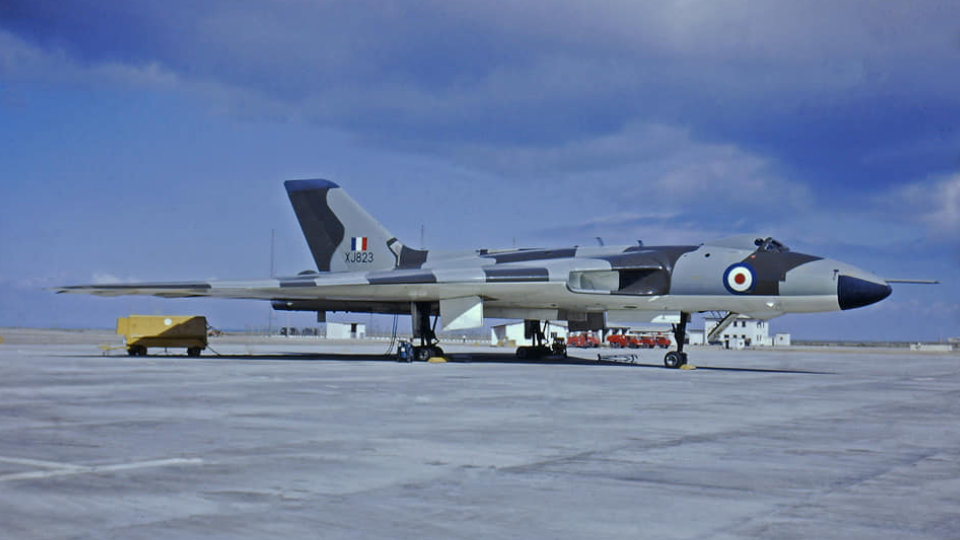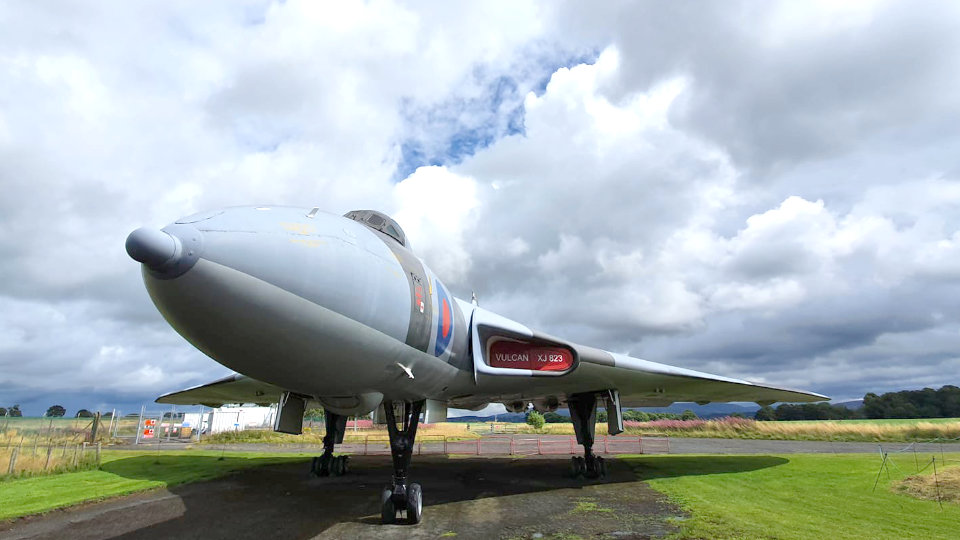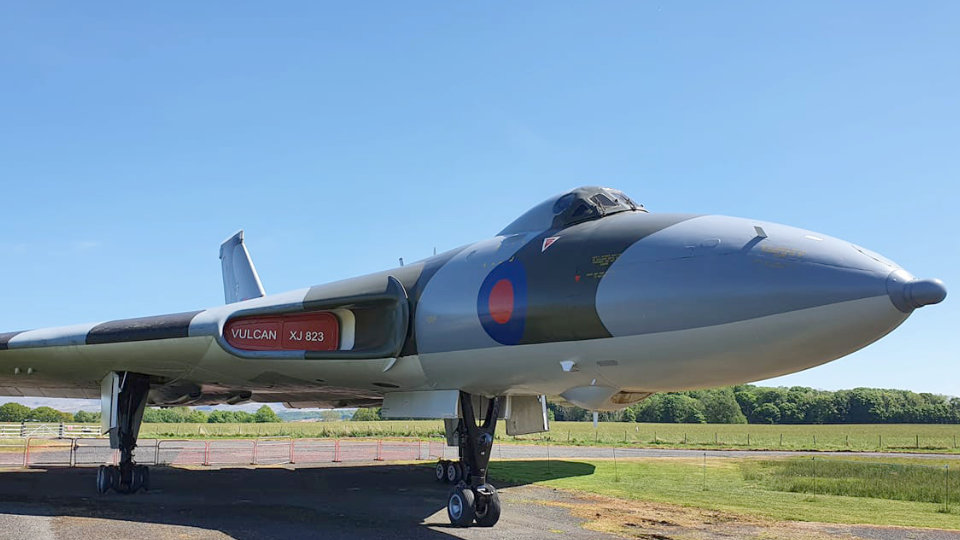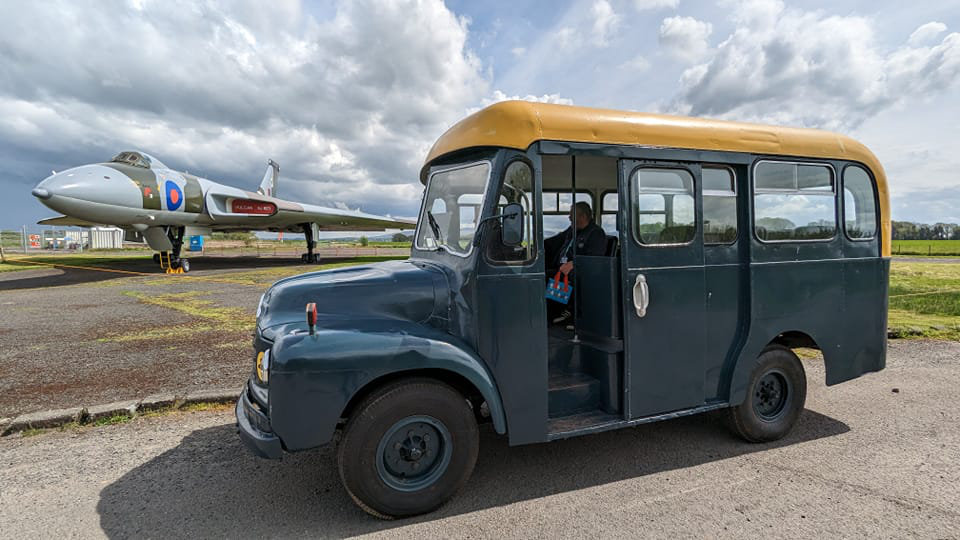Avro Vulcan XJ823
History & Specifications
| Engine | 4 x Olympus 202 |
| Thrust | 17,000 lbs |
| Max Speed | 645 mph / 1037 km/h |
| Max Range | 4,600 miles / 7,408 km |
| Length | 99 ft 11 ins / 30.45 m |
| Wing Span | 111 ft / 33.83 m |
| Max Altitude | 65,000 ft / 20,000 m |
The Avro Vulcan is a jet-powered tailless delta wing high-altitude strategic bomber, which was operated by the Royal Air Force (RAF) from 1956 until 1984.
The Vulcan B.1 was first delivered to the RAF in 1956, with deliveries of the improved Vulcan B.2 starting in 1960.
The B.2 featured more powerful engines, a larger wing, an improved electrical system and electronic countermeasures (ECM). Many were modified to accept the Blue Steel missile.
As a part of the V-force, the Vulcan was the backbone of the United Kingdom’s airborne nuclear deterrent during much of the Cold War.
Although the Vulcan was typically armed with nuclear weapons, it was capable of conventional bombing missions, a capability which was used in Operation Black Buck during the Falklands War between the United Kingdom and Argentina in 1982.
The Vulcan had no defensive weaponry, initially relying upon high-speed, high-altitude flight to evade interception. Electronic counter measures were employed by the B.1 (designated B.1A) and B.2 from circa 1960. A change to low-level tactics was made in the mid-1960s.
Vulcan XJ823 entered service in April 1961 with 27 Squadron RAF Scampton, Lincolnshire, which had just reformed that month. It was the very first Vulcan to see service with the Squadron. The aircraft was powered by four Olympus 201 engines, and painted in an immaculate all white livery.
In January of 1963 it was transferred to 35 Squadron at Coningsby, and again was the first Vulcan to see service with that Squadron. She also saw service with 44, 50, 9 and 101 Squadrons.
In 1969 she was re-located to Akrotiri as Near East Air Force Wing for a year, and in January of 1977, she was flown to St Athans Engineering Wing for “MRR bolt on modifications” (Maritime Radar Reconnaissance). She was one of eight aircraft to have these modifications done, and was used in this role until 1981.
When her RAF service was complete she was purchased by two society members and flown to Carlisle airport on the 24th January 1983.
